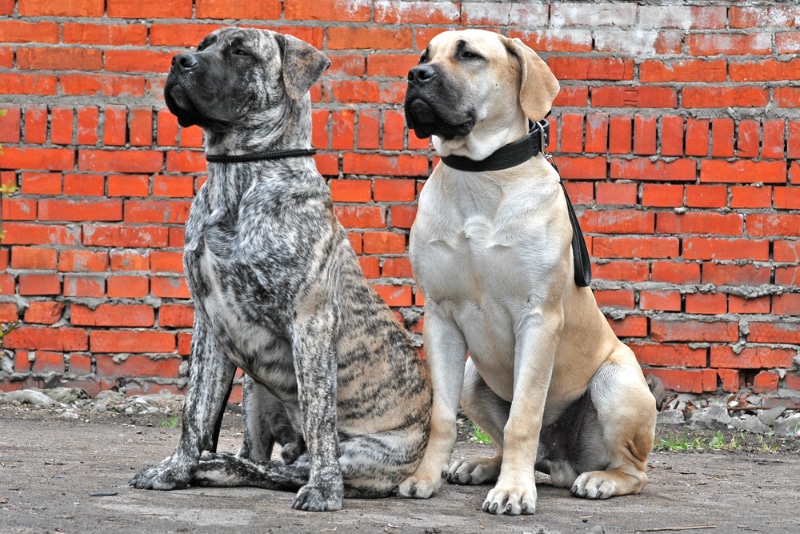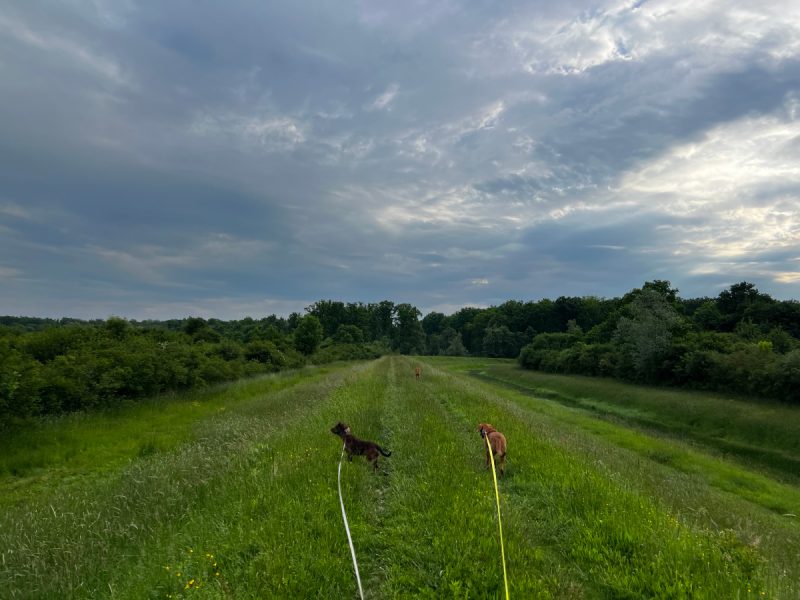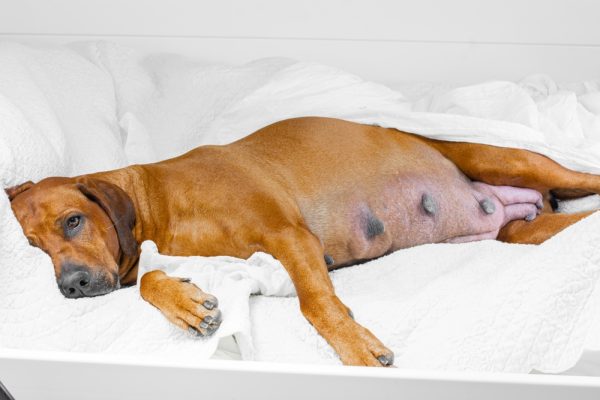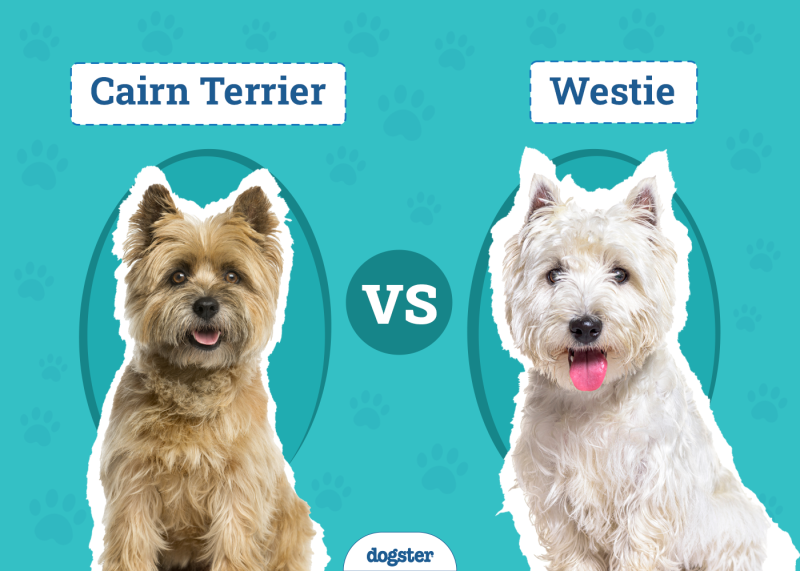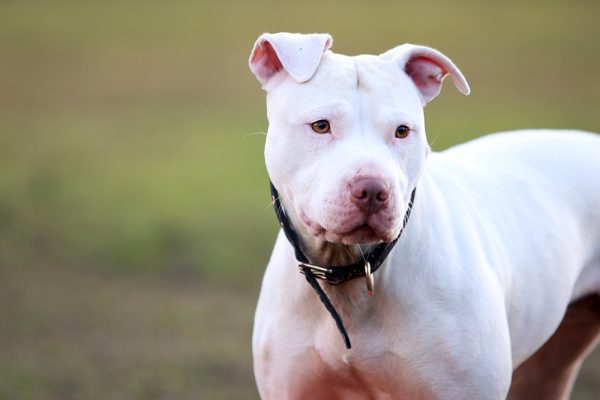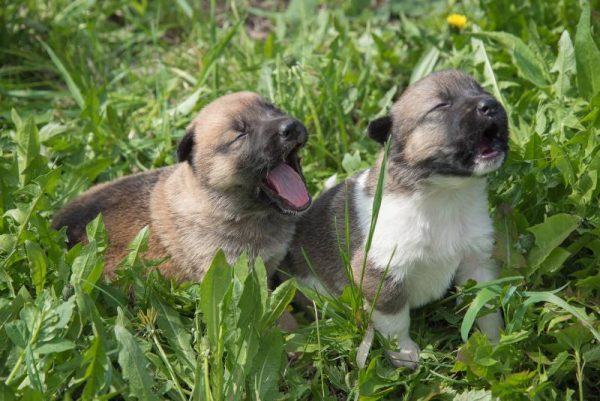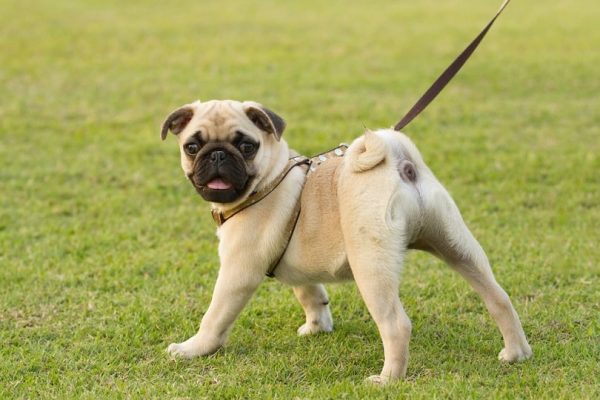The well-socialized Boerboel is a delightful and utterly devoted family companion with an abundance of love to share, but training from as early as possible is essential to prevent this large and powerful dog from becoming a handful.
Despite often being rather chilled out as puppies, these natural guardians can grow to be domineering and unmanageable if dog parents are lax about training, so you’ll want to get down to business right away. In this guide, we’ll share some top tips on training a Boerboel.

Boerboel Stats
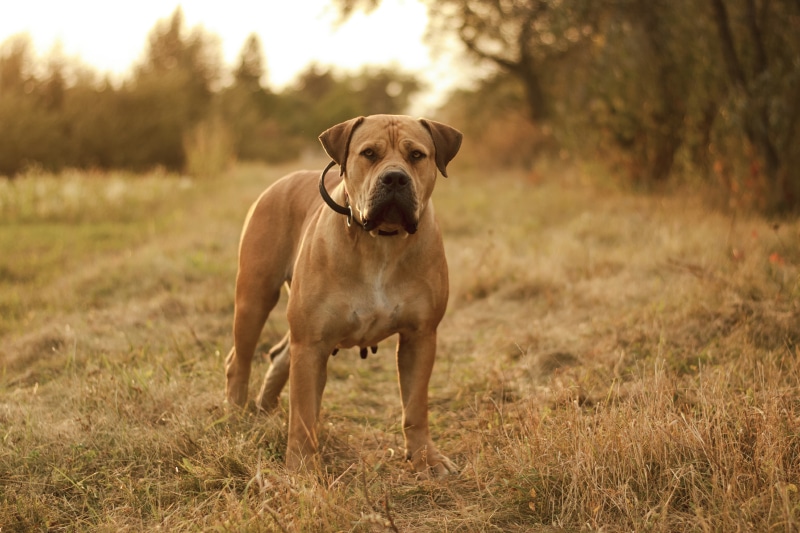
| Height: | 22-27 inches |
| Weight: | 150-200 pounds |
| Life expectancy: | 9-11 years |
| Origin: | South Africa, used for guarding homes and property |
| Pronunciation: | Bor-bul, Bauble |
The Boerboel is a loyal family dog, but their athleticism and size mean that there is little room for error when it comes to training, and they are not an ideal breed for an inexperienced dog owner.
The 14 Tips for Training a Boerboel
- Short leash
- Long leash
- Harness
- Treats/toys to use as rewards
1. Start Young
Start training your Boerboel puppy as soon as you bring them home—the earlier, the better. Though they may seem super relaxed now, they’ll soon grow up and get bolder, so now is the time to instill boundaries and start socializing your dog. Being tactile with your dog to get them used to being handled is one of the most important things to start with.
In addition, have your Boerboel spend time with different people and, if possible, invite over family, friends, or neighbors with vaccinated, healthy dogs so your Boerboel can get used to spending time around other dogs. Check with your vet when it’s safe for your puppy to go to public places, as this can depend on their vaccination schedule.

2. Teach the Basics
When it comes to dogs, it’s best to start as you mean to go on, which means getting to work on basic commands right away. It’s essential for all dogs—but especially large, powerful dogs—to learn the following basic commands to keep everyone (including themselves) safe.
When teaching your dog, make sure you have set aside some time to do it, and make sure they are feeling calm. Be sure you have their attention, speak loudly and clearly, and remember that they heard you the first time. Teach your dog to sit on the command “sit”, not “sit….sit, sit, sit….sit…sit”!
Here are some important commands to teach and methods of doing so. You can start practicing in your home before taking your dog out in public.
The two most important commands for any dog are to have them come to their name (come) and to drop whatever they have in their mouths (drop it).
Come
This might seem straightforward, and puppies quickly learn their names, but there are two things to consider when training your Boerboel to come when called.
- When choosing a name, think about how easy it is to call out in a large area. “Copernicus” or “Princess Consuela” are awesome names, but not so quick and easy to shout at the beach or dog park.
- Your dog needs to come to their name even if there are other dogs, exciting smells, or small furry creatures running away. Instill a strong positive association with recall, then practice it with various distractions.
Hold out a treat or your Boerboel’s favorite toy, crouch down, and say “Come!” in a friendly manner. Reward your dog when they come while saying “Good Come”. It’s a good idea to teach “Come” while your Boerboel is on a long leash if they’re out in public. This gives you more control.
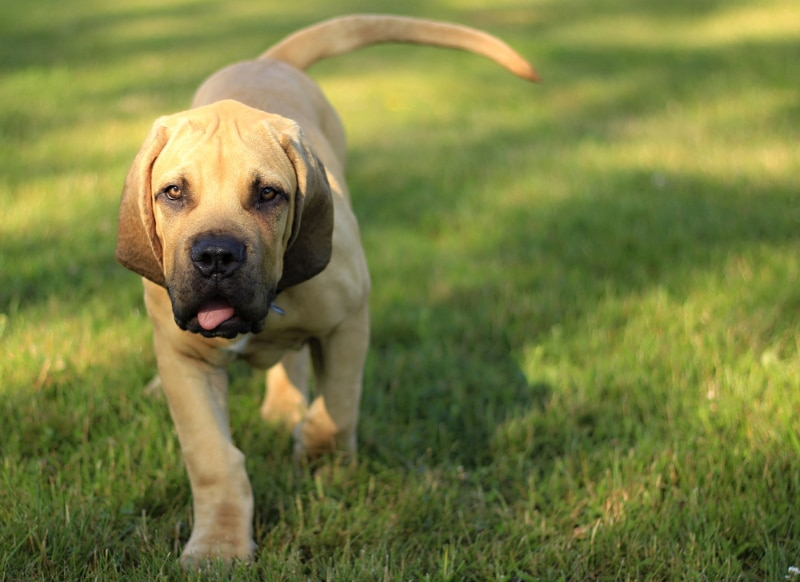
Drop It
Many dogs end up at the vets for eating things that they shouldn’t, and the larger the dog, the more things they can get into their mouths. Teaching your dog to drop what is in their mouth is essential for their safety, and for yours. Your dog should also drop toys, food, and treats on command, and this is particularly important for a large dog like the Boerboel.
The easiest way to start this training is with toys. Use a toy that is large enough for you to easily grab onto when it’s inside their mouth. When the toy is in their mouth, hold the toy and say “drop it.” If they let go of the toy, give them lots of praise and a fuss, and allow them to have the toy back – this is important.
If they don’t release the toy, do not engage in tug-o-war – this just becomes a game to them. Use a treat or another toy to get them to drop the toy in their mouth, and remember to give them praise when they do. When taking food, treats, or toys from your dog in training, it is important to give them back, otherwise they are likely to start guarding the things they love most. If they think that they will get the item back, they are more likely to drop whatever is in their mouth whenever you tell them to.
Always be careful when taking things from your dog’s mouth, especially one as large as the Boerboel! But if you train them right, you should be able to easily take anything from them without worrying about being bitten.
Sit
You can teach this by taking a treat and moving it above your dog’s head. As the head goes up, their bottom should go down toward the ground. Say “Good Sit” while you give them the treat. This teaches them to associate “Good” and the treat with the action. If they sit without you saying the command, still praise them with “Sit, good sit” so they associate the words with the action.
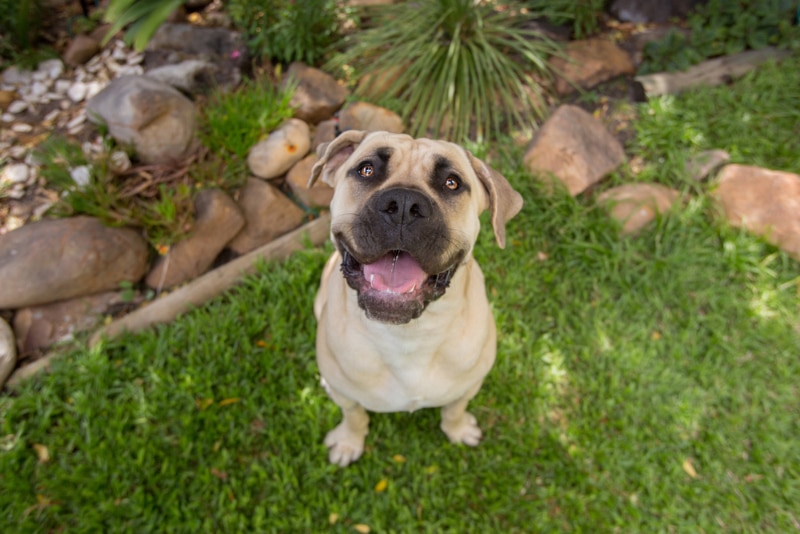
Stay
Have your Boerboel sit and give the command “Stay”. Before your dog moves, reward them with a treat. Then, give the command again, waiting a few seconds this time before giving the treat. If they move before they get the treat, take them back to where they were, and start again. Gradually build up the length of time your dog has to “stay” before they get the reward. Say “Good Stay” when you reward them.
Leave It
Hold out your palm with a treat on it. Say “Leave It” and reward your dog if they manage to do so for a couple of seconds. Gradually build up the length of time they have to leave something alone. Couple the reward with a “Good Leave It”.
Heel
Put your Boerboel’s leash on and start walking. When they move ahead of you, stop, say the dog’s name, and say “Heel” while pointing to your side or patting your thigh. When they come to your side, say “Good Heel” and reward them.
Build up the time your Boerboel has to walk at your side before they can get the treat, starting with a few seconds at first. This helps prevent them from thinking they can come to your side, get a reward, and just carry on what they were doing before. A veterinarian can also provide you with guidance on how to train basic commands.
If you need to speak with a vet but can't get to one, head over to PangoVet. It's our online service where you can talk to a vet online and get the advice you need for your pet — all at an affordable price!

3. Use Positive Reinforcement
Positive reinforcement means rewarding and praising your dog for behaving correctly rather than punishing them for their mistakes. Finding out what your Boerboel is most motivated by is a good way to decide on what their reward will be when they do something right. For example, while some dogs are motivated by treats, others are motivated by toys and play.
These rewards help form positive associations about the actions you’re trying to get them to perform, thereby encouraging them to do these things more.
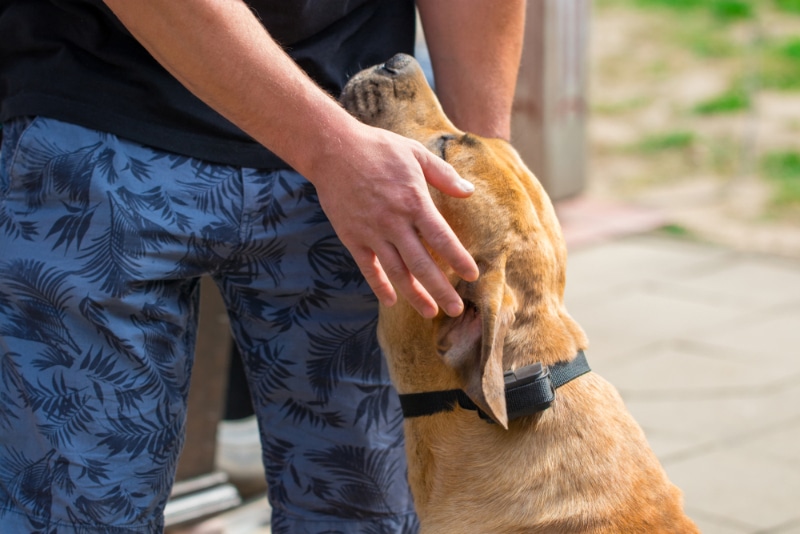
4. Reward Calm Behavior
Sometimes, we can get so caught up in rewarding specific actions that we forget to acknowledge the good behavior you didn’t ask for. When your Boerboel is settled and quiet, give them a treat. Trying to engage your dog while they’re chilled out isn’t a good idea because it breaks their calm: Instead, simply drop a treat in front of them.
You can also reward your Boerboel for meeting people politely. When your dog meets someone new, keep them on a leash and only let them approach the person if they’re calm. These dogs are naturally protective, so socializing them around other people is really important, so they don’t become wary of everyone outside the family.
5. Ignore Undesirable Behavior
If your dog is jumping up, barking at you, or otherwise trying to demand attention, the worst thing to do is shout and wave your arms – as far as they’re concerned, you’ve just joined in the conversation! Don’t say a word, just walk away. When they are calm, offer them a pat or treat, and quietly give them praise.

6. Be Consistent
It’s not enough to do a few training sessions with your Boerboel because training and socialization need to be ongoing to be properly instilled. You’ll want to work on commands daily and keep up with socializing them around other dogs and people, so they don’t fall into bad habits.
Make sure everyone in your family is doing the same thing to prevent the dog from getting confused as to what is and isn’t acceptable. It might seem hard to be consistent sometimes, but it’s worth it in the long run.
7. Be in Charge
When you let your dog pull on the leash or get up on the couch “just once” even though you don’t usually permit them to, it sends your dog mixed messages about who actually makes the rules. That’s not to say that later on, once your Boerboel has settled into their routine and there is no confusion about rules and boundaries, that you can’t invite them onto the couch, but this must always be at your invitation.
You need to gently but firmly establish yourself as the pack leader and get into the mindset of being a pack leader—your dog needs to know that you set the boundaries, and they need to look to you for leadership. If you are inconsistent with rules and boundaries, particularly in the early training stages, your dog will become confused about who is in charge of decisions, and will try to take on that role, which is actually quite stressful for them.
When you share your home with dogs, particularly dogs that might weigh more than you do, there needs to be no uncertainty that you are in charge. You need it, too, because you don’t want to spend your time with your dog stressing about how they’re going to behave.
Use lots of positive reinforcement, be consistent, and take a firm but kind approach to win your dog’s respect. Avoid resorting to harsh punishments as this will damage your bond with your dog.
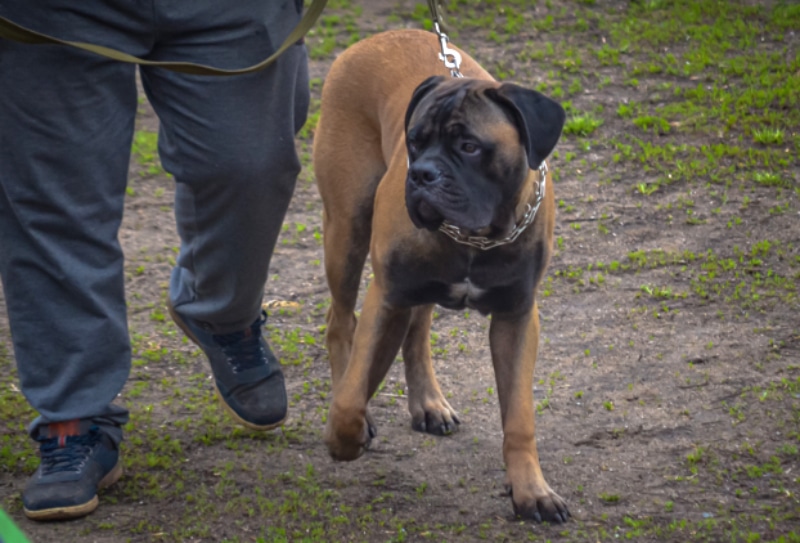
8. Know How to Say No
Positive reinforcement (praising the good) and negative punishment (ignoring the bad) are the mainstays of healthy dog training. However, there will invariably be times when you need to stop a behavior quickly, either for your dog’s safety, or that of yourself or family.
Pups like to play rough, and if you have a big dog and small kids, this can be a problem. Some people will advise you to squeal or cry out if your pup hurts you, showing them that they caused pain. However, this can have the opposite effect, and get them riled up, just like when they play with their littermates. Instead, get everyone in your family to learn the “no” bark. Think of how an adult wolf would correct a naughty pup, channel your inner beast, and say “No!”
This is particularly useful for kids and women, as the higher register of our voices often don’t have the same gravitas as the male voice. A short, sharp, deep “No!” will usually stop your dog and turn their attention to you, allowing you to move them away or give a command.
9. Go to Obedience Classes
It’s a good idea to enroll your Boerboel in obedience classes to supplement the training you’ll do at home. These classes are beneficial for socializing your dog and picking up some top tips from the professionals. They’re also a good place to start if you’re new to training.
10. Keep the Sessions Short
Keep your training sessions between 5 to 15 minutes, aiming for consistency every day. This approach will help maintain your pet’s focus, prevent boredom, and leave them excited for the next session, creating a positive association with the experience for them.
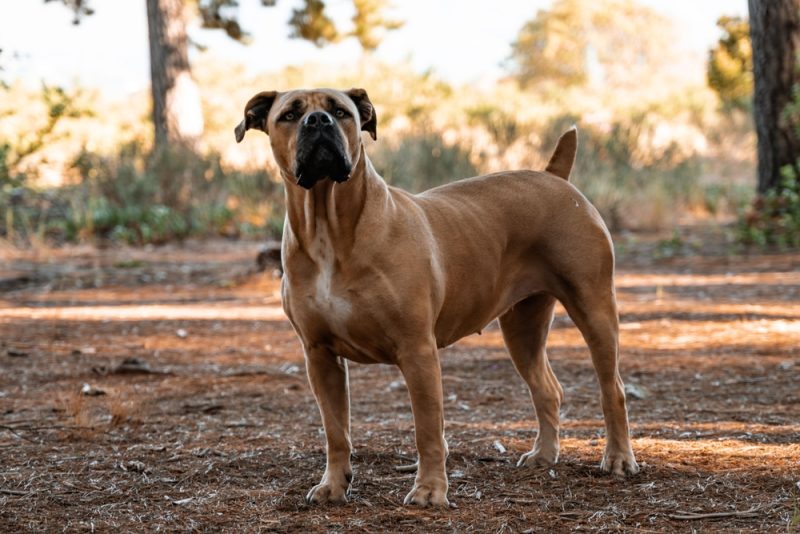
11. Socialize Your Boerboel
Once your Boerboel puppy has had their first round of vaccinations, you should start gradually exposing them to different people, environments, and healthy, vaccinated pets. Early socialization prevents fear, anxiety, and aggression in dogs later on, which in turn will help make them more receptive to training and better able to get along with strangers and other pets. It also reduces the likelihood of them developing barking or hiding habits in public places. Initially, avoid uncontrolled environments with unknown dogs until they are fully vaccinated to protect their health.
12. Provide Them With Toys to Chew On
Chewing is a completely natural behavior for dogs, particularly puppies, so you shouldn’t entirely discourage this behavior, as this will only confuse them. Instead, you should provide them with appropriate chew toys, adequate for their size and age, that you can redirect their attention to whenever they attempt to chew on things they shouldn’t.
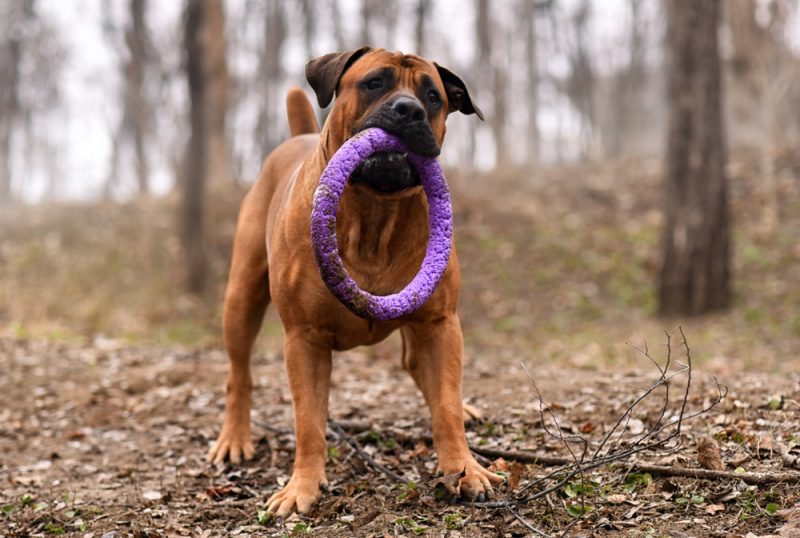
13. Have Training Sessions in a Variety of Environments
Make your training sessions more engaging for both you and your Boerboel by practicing in various locations. This will help them learn to follow your commands anywhere, reinforcing your role as the authority, no matter the environment.
14. Prevent Separation Anxiety
Accustom your Boerboel to being alone by starting with short periods of separation and gradually increasing the time as they become more comfortable. Begin by leaving them in a safe, quiet space with engaging toys or puzzle feeders to keep them mentally stimulated and occupied. This helps prevent boredom and reduces the likelihood of destructive behaviors that may arise from stress and frustration. By slowly building their tolerance to being alone, you’ll help them become more independent and relaxed, even when you’re not around.

Final Thoughts
Boerboels are best suited to dog parents with some experience because proper training is crucial for these ginormous dogs. Your Boerboel will also need plenty of daily exercise to reduce their stress levels and make training easier. A bored, under-exercised dog is much harder to train and socialize than one with an outlet for pent-up energy.
- You might be interested in: How to Train Your Dog with Love + Science Book Review
Featured Image Credit: Pikunova Nadiia, Shutterstock

